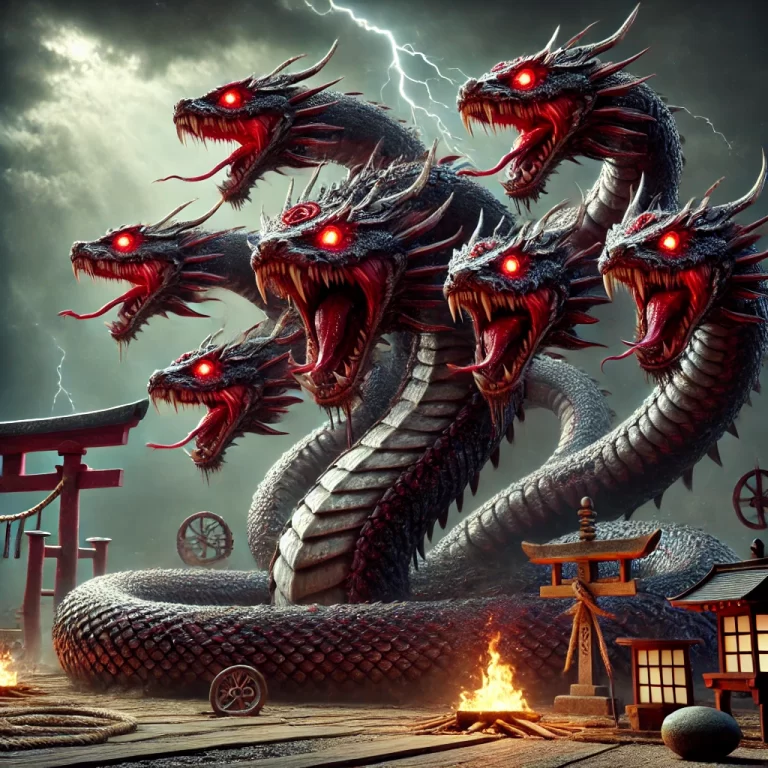Níðhöggr: The Dreaded Dragon of Norse Mythology

Níðhöggr: The Dreaded Dragon of Norse Mythology
In the rich tapestry of Norse mythology, few creatures are as terrifying and enigmatic as Níðhöggr. This dragon, whose very name evokes fear, is a central figure in the cosmic drama that unfolds within the Norse cosmos. While gods and heroes often take the spotlight, Níðhöggr lurks in the shadows, gnawing away at the roots of Yggdrasil, the World Tree, and embodying the forces of chaos and destruction.
The World Tree: Yggdrasil
To understand Níðhöggr, one must first understand Yggdrasil, the great ash tree that connects the Nine Worlds of Norse cosmology. Yggdrasil is more than just a tree; it is the axis mundi, the central pillar that upholds the universe. Its roots extend into the depths of the earth, while its branches reach into the heavens, connecting all realms of existence.
Yggdrasil is not just a passive structure but a living entity that requires care and protection. It symbolizes the interconnectedness of all life, the balance between order and chaos, and the cyclical nature of existence. However, this balance is constantly under threat, with Níðhöggr playing a pivotal role in this eternal struggle.
Níðhöggr: The Devourer
Níðhöggr, whose name can be translated as “Malice Striker” or “Curse Striker,” is often depicted as a fearsome dragon or serpent. He resides in Niflheim, the dark and cold realm of the dead, and spends eternity gnawing at the roots of Yggdrasil. His constant gnawing weakens the World Tree, threatening the stability of the cosmos.
In Norse mythology, Níðhöggr represents the destructive forces that are always present, lurking just beneath the surface of the world. While the gods and heroes strive to maintain order, Níðhöggr’s relentless efforts symbolize the inevitability of decay, death, and destruction. He is not merely a villain but a necessary part of the cosmic balance, embodying the darker aspects of existence that cannot be ignored.
The Cosmic Struggle
Níðhöggr’s role in the Norse mythological cycle is complex. He is not just an antagonist but a force that must be reckoned with in the grand scheme of things. His gnawing at the roots of Yggdrasil can be seen as a metaphor for the slow but inevitable decay that affects all things in the universe, even the gods themselves.
The presence of Níðhöggr also hints at the cyclical nature of Norse cosmology. Just as Yggdrasil symbolizes life and growth, Níðhöggr represents death and decay. This duality is central to the Norse understanding of the world, where creation and destruction are two sides of the same coin, and where the end of one cycle leads to the beginning of another.
Ragnarök: The Final Battle
Níðhöggr’s role becomes even more significant in the context of Ragnarök, the prophesied end of the world in Norse mythology. During this apocalyptic event, the forces of chaos, led by the fire giant Surtr, will battle against the gods, leading to the destruction of the world as it is known.
After the cataclysm of Ragnarök, it is said that Níðhöggr will rise from the depths, carrying with him the corpses of the dead. This grim image underscores the idea that even in death, there is a continuation—a recycling of life and energy that will eventually lead to the rebirth of the world.
Conclusion: The Legacy of Níðhöggr
Níðhöggr’s gnawing at the roots of Yggdrasil is a powerful symbol in Norse mythology, representing the constant tension between order and chaos, creation and destruction. While often viewed as a malevolent force, Níðhöggr is an essential part of the mythological landscape, embodying the darker truths of existence.
In modern interpretations of Norse mythology, Níðhöggr continues to fascinate and terrify, reminding us of the fragility of life and the inevitability of change. Whether seen as a villain or a necessary evil, Níðhöggr’s presence in the mythos is a reminder that even in the most stable and ordered systems, chaos is always lurking, ready to strike when least expected.






